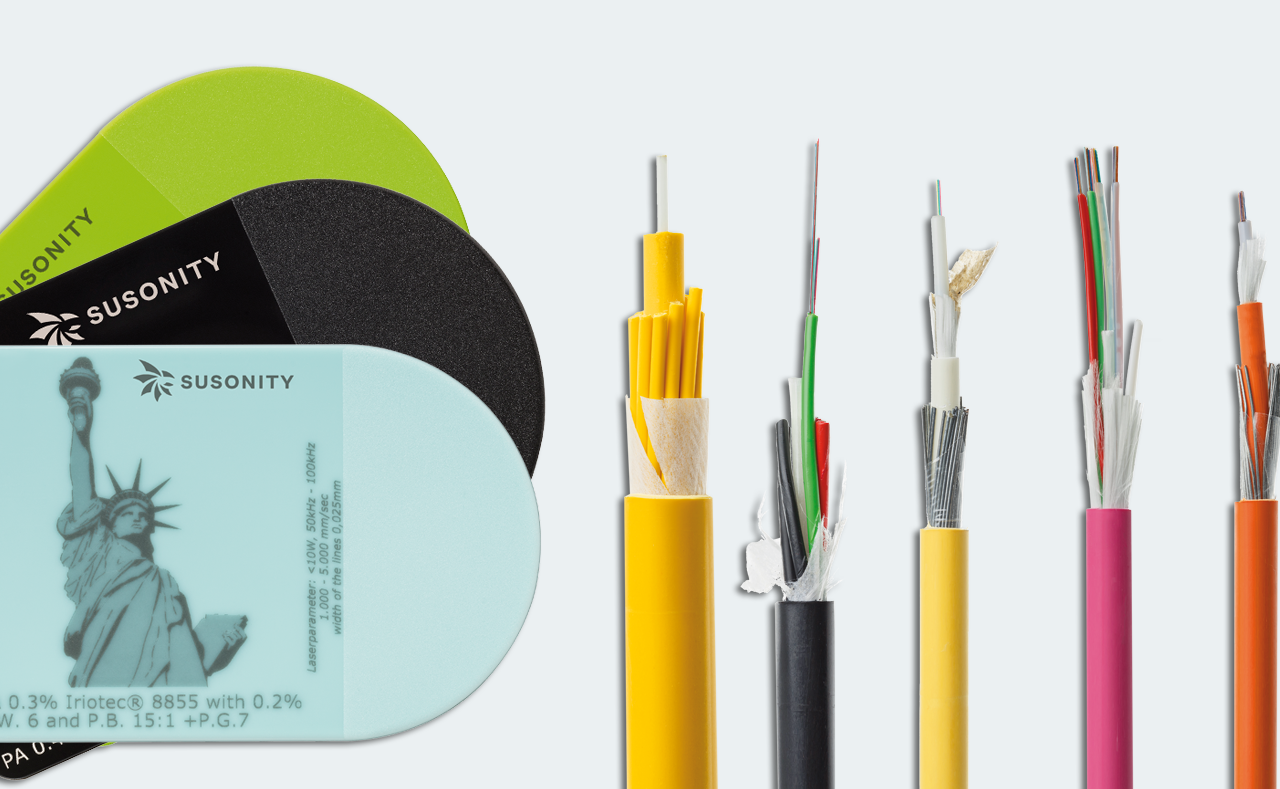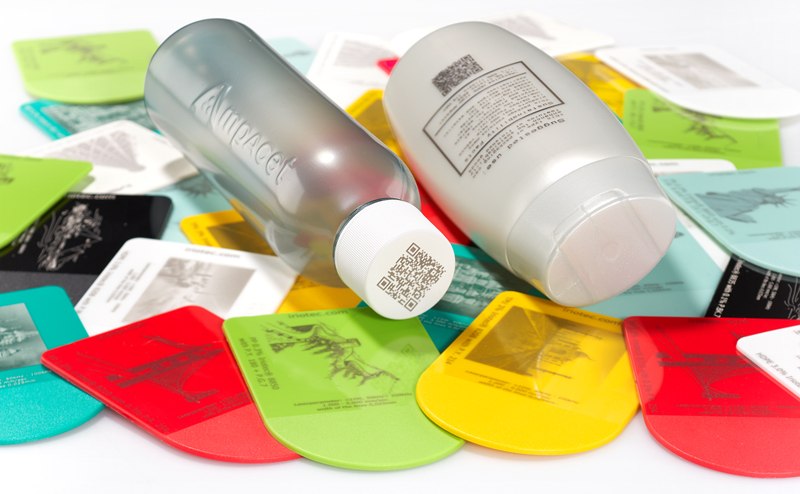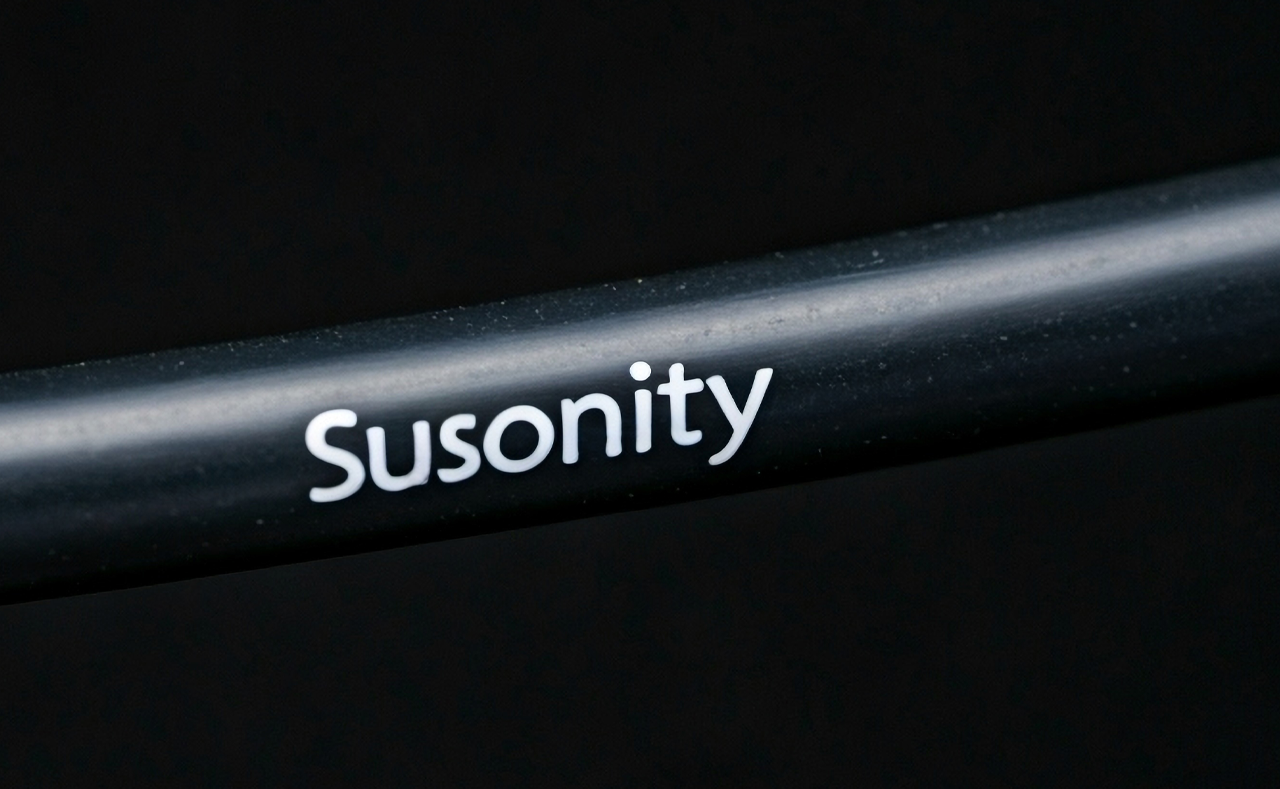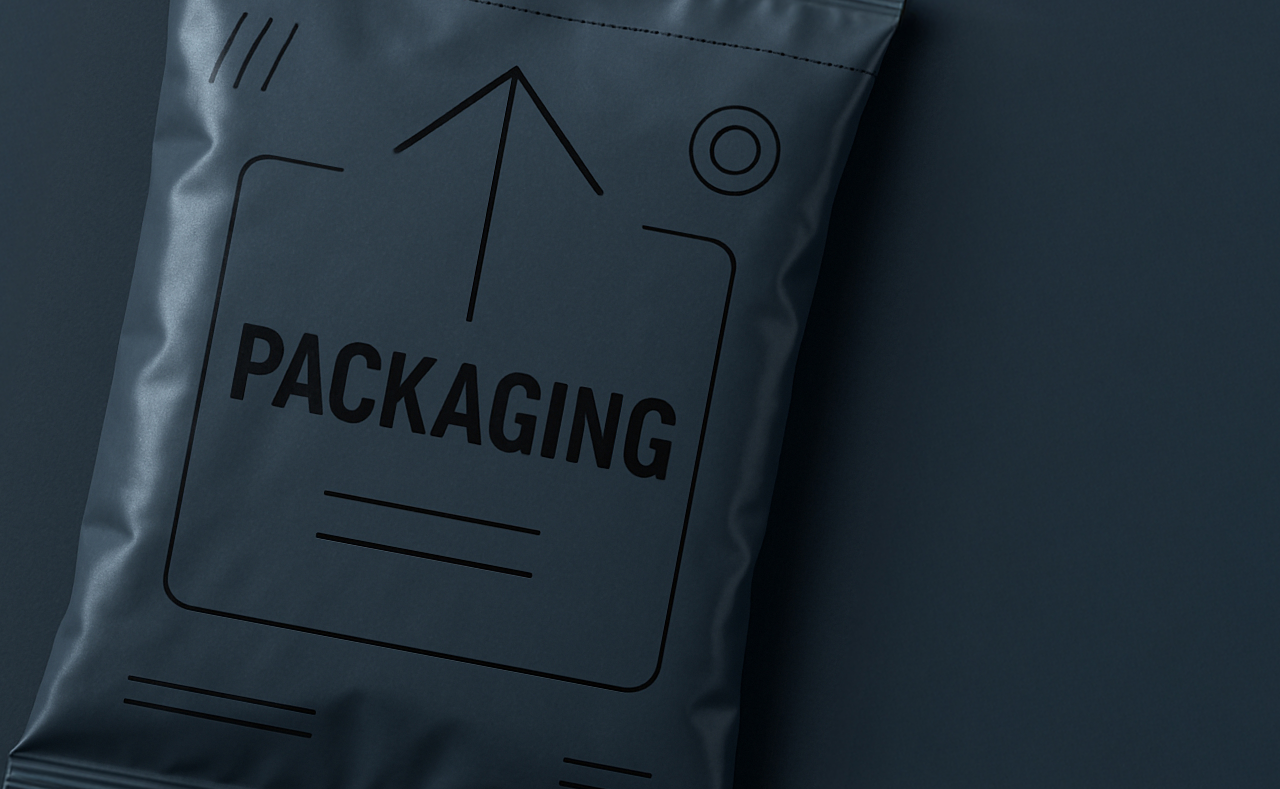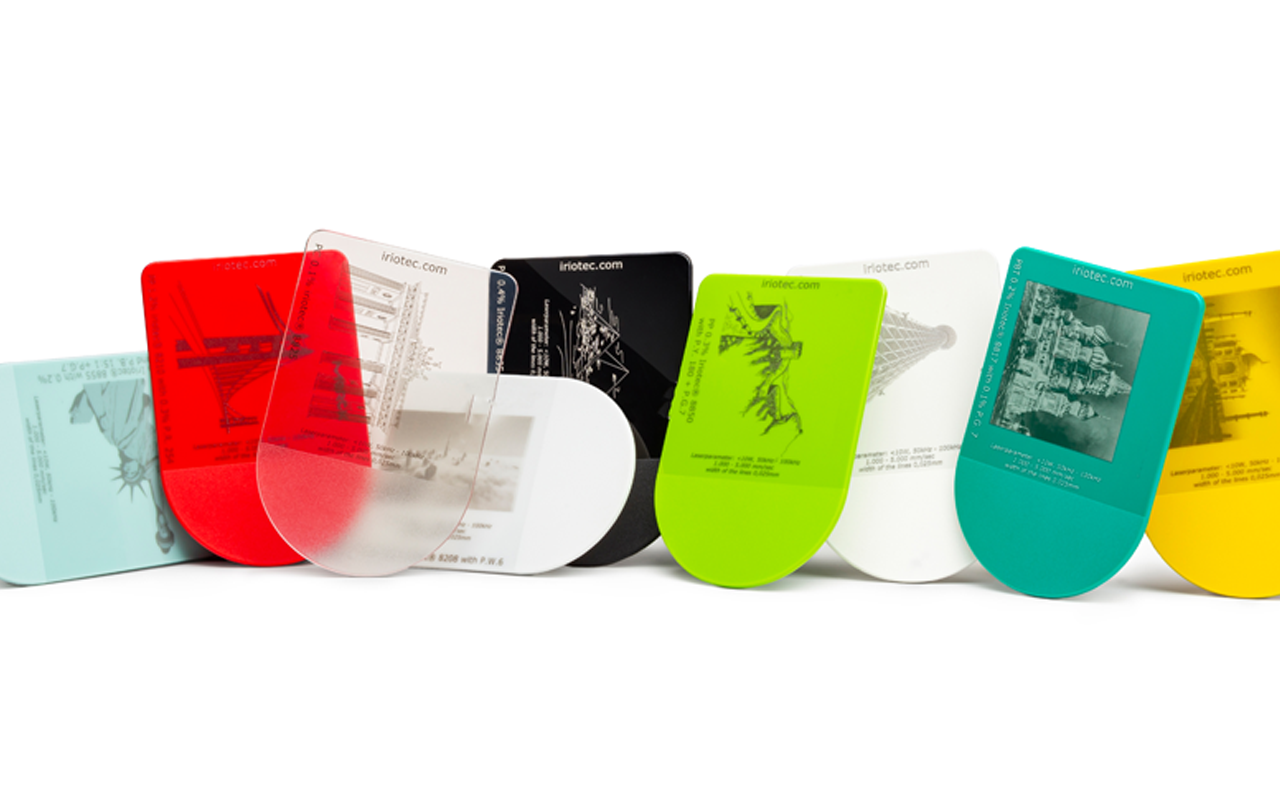An industry-wide project demonstrates how packaging can become smarter, more sustainable, and fully traceable.
Plastics are a blessing—and a global problem. Lightweight, durable, and versatile. Yet these very properties make plastics a challenge worldwide. Over 400 million tons are produced each year, with only about 9 percent being recycled. The rest are landfilled, incinerated, or end up in the environment.
The situation in Germany is similarly disappointing. According to the Federal Environment Agency, nearly 99 percent of plastic waste is recovered, but the majority is only used for energy. The material recycling rate, or true recycling, is only 38 percent, and if PET bottles are excluded, the figure is significantly lower. Globally, the share of recycled plastic packaging is minuscule.
Why? Because plastic packaging today is often not designed for circularity. They are made from composite materials, printed, labeled, or contain additives that complicate recycling. The result: poor sortability, low quality of recyclates, and lost raw materials.
One answer: digital packaging with laser marking.
A cooperation of leading companies has developed a solution that addresses multiple problems at once: packaging that is machine-readable through laser labeling, along with an open data infrastructure that allows this information to be digitally stored and accessed at any time. This turns every package into a data source, enabling high-quality, single-stream recycling.
The platform behind this is called R-Cycle. It is based on GS1 standards and allows for the central collection of all relevant information: material composition, origin, processing details, and recyclability. Packaging thus receives a digital product passport that accompanies it throughout its entire lifecycle—from production to recycling.
Seven Companies. One Goal.
The project brings together expertise across the entire value chain:
- Susonity provides the laser-sensitive Iriotec® pigments for marking
- Bischof+Klein develops highly functional film structures with a high recycling content and complete recyclability
- SABIC produces plastics that can be optimally laser-marked and recycled
- Avient supplies masterbatch expertise for pigment integration and tests the recyclability of the end product
- Reifenhäuser contributes extrusion technology for packaging production
- Koenig & Bauer provides and integrates the laser system for industrial marking
- Haver & Boecker manufactures automated filling and complete packaging lines
- R-Cycle connects physical packaging with digital data availability
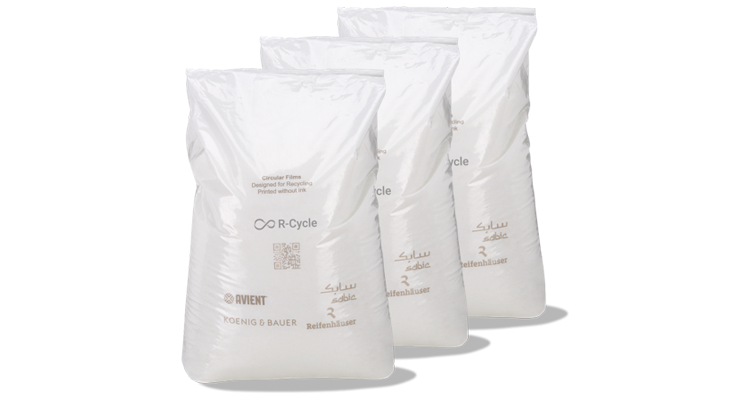
The Technology Behind It: Marking with Light.
In laser marking, the labeling is not printed or stuck on but directly incorporated into the material. This is made possible by special pigments contained in the polymer . The laser causes carbonization or slight foaming at the surface, creating sharp contrasts, either light on a dark background or vice versa. The marking is permanent, hygienic, abrasion-resistant, and requires no ink or adhesive.
Unlike printed or labeled materials, there are no color speckles or disturbances in the recyclate, eliminating additional costs associated with reprinting or relabeling. The twist: even after recycling, the pigment remains in the material. This means that packages made from recyclate can be marked again without loss of quality or residues.
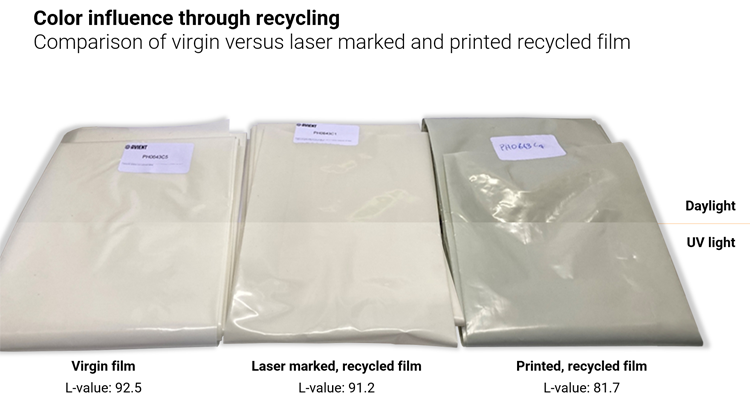
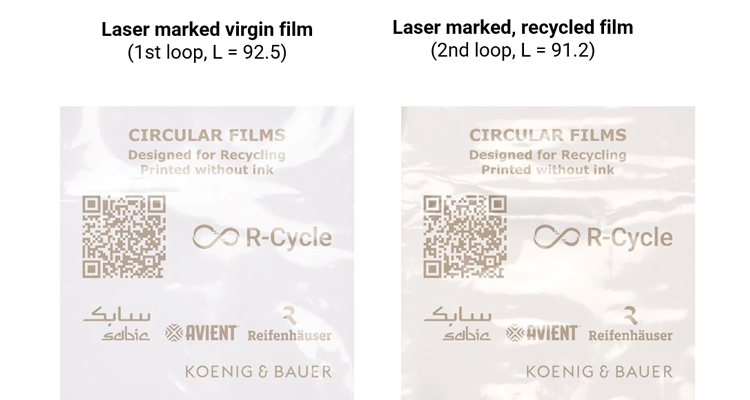
Laser Marking Also Makes Economic Sense.
- No consumables like ink or labels
- Low maintenance
- Easy integration into existing systems
- Improved recyclate quality without additional cleaning steps
- Documentable recyclability via QR or data matrix codes
Design Limitations? Yes—but Solvable.
Laser marking is a highly efficient process. However, colored prints or complex graphics cannot be represented. The marking relies on contrasts—light on dark or vice versa. For those wanting colored branding, colored plastics can be used, or laser marking can be combined with other techniques. For many applications, especially in the industrial sector, laser marking is already the best choice.
Vision: Industry 4.0, Digital Twin, and Circular Economy through Laser Marking
The project paves the way for a true circular economy in Industry 4.0. Many manufacturers are already working with digital twins—virtual representations of their production lines and products that capture material data, lifecycle information, and recyclability. In this project, this data structure is used to seamlessly link the physical laser label with a Digital Product Passport (DPP). Each FFS bag or bottle thus receives a digital twin during production, which is updated over multiple lifecycles.
This development comes at a crucial time, as the EU Packaging and Packaging Waste Regulation (PPWR) and the Ecodesign Regulation, including mandatory DPP from 2027, increase pressure on manufacturers to ensure recyclability and material transparency. By 2030, about 30 percent of recycled material must be used in beverage bottles, and by 2040, even higher recyclate quotas and strict requirements for recyclability of up to 95 percent will apply.
With laser-based, data-linked labeling, these requirements can be documented, managed, and proven at any time. Within an Industry 4.0 environment, production data, reuse cycles, and material analyses can be automatically captured and fed back. Cloud-based, digital, and neutral. This creates an intelligent material flow, where the product not only "lives" physically but also data-wise; from production to use to reintegration into the system.
The cooperation partners believe this approach can be flexibly applied to industrial packaging, pharmaceutical and medical products, as well as complex consumer packaging and logistics packaging. Additional partners from manufacturing, consumer goods, and logistics are invited to join us in making this technology market ready on a broad basis.
Invitation to Partnership: Let's Close the Loops Together Now
The technology is ready for the next step. Field tests on real production lines and the integration of the R-Cycle data structure are already in preparation. This will create a fully digitally supported packaging cycle that is intelligent, efficient, and scalable.
We invite industrial companies, brand manufacturers, logistics and recycling businesses, and research partners to join this initiative. Together, we will shape the future of a functioning circular economy for plastics with cleaner material flows, lower environmental impact, and economic value.
Get in touch now & become part of the "Circular Economy through Laser Marking" movement.
BEYOND HERITAGE COMES SUSONITY
Beyond reliability comes peace of mind. Beyond effects comes infinite possibilities.
Information on hazard classes or hazard categories can be found in the safety data sheet.
© 2025 SUSONITY Commercial GmbH and/or its affiliates. All Rights Reserved.
Reproduction of any materials from the site is strictly forbidden without permission.

